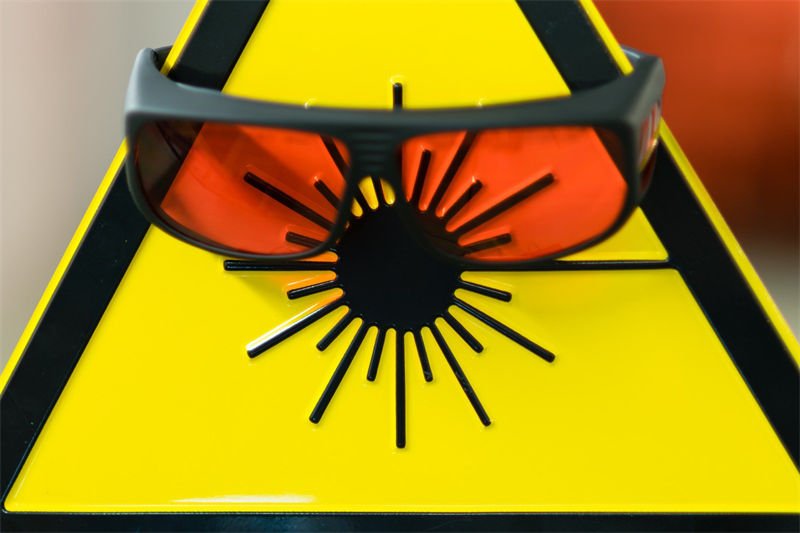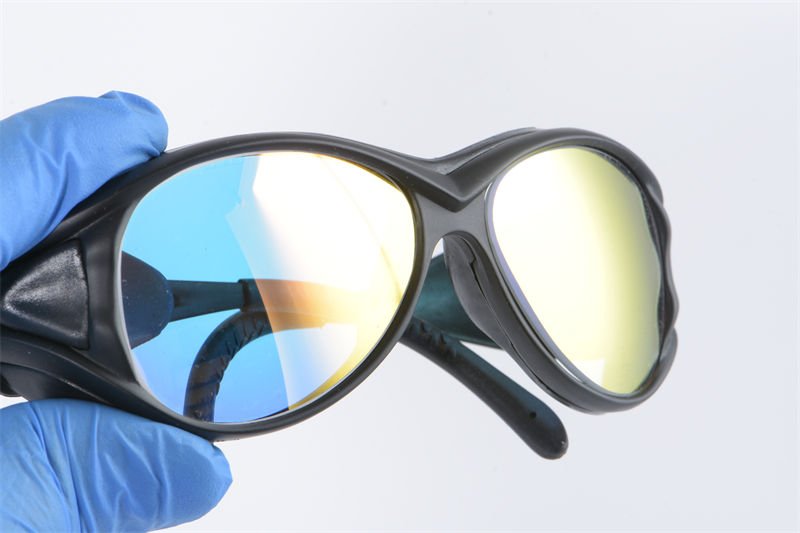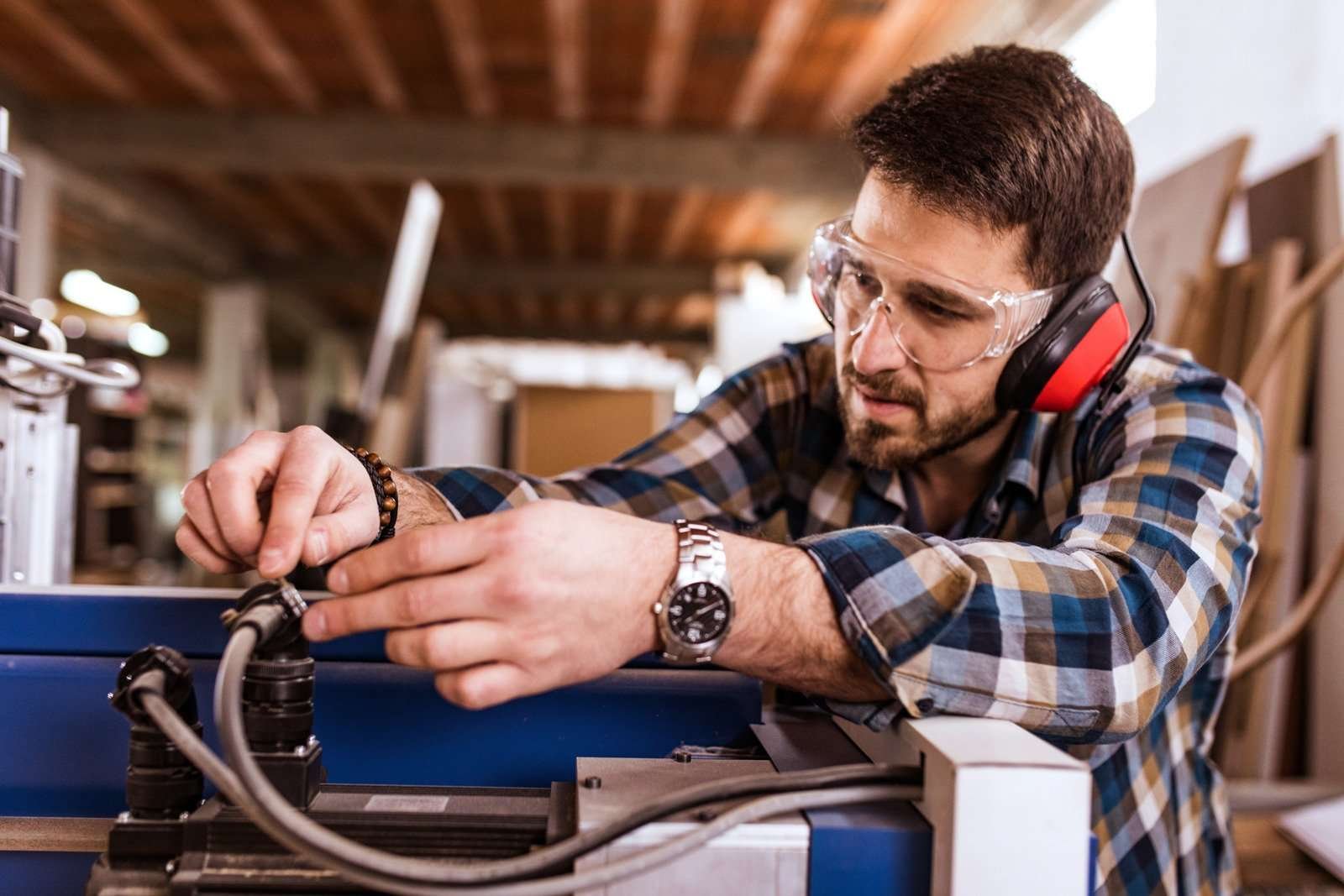
As I work in environments where lasers are present, I often wonder about the effectiveness of my protective gear. Do laser safety glasses really have a shelf life?
Yes, laser safety glasses do have an expiration date, often influenced by material degradation and usage conditions. Typically, they should be evaluated for effectiveness every 3 to 5 years, or sooner if used in harsh environments or exposed to high-power lasers frequently.
While it’s clear that laser safety glasses can expire, understanding the factors that lead to this degradation is crucial for maintaining optimal protection. Let’s explore what affects their longevity and how you can assess and extend their life effectively.
Laser safety glasses should be replaced every 3-5 years.True
Material degradation and usage conditions can reduce protection over time.
What Factors Affect the Longevity of Laser Safety Glasses?
Laser safety glasses are crucial for eye protection, but what factors determine their lifespan?
The longevity of laser safety glasses is affected by material aging, decline in protection performance, and environmental conditions. Regular inspections and maintenance can help ensure they remain effective over time.

Material Aging
Lens Materials: The lenses in laser safety glasses are made from specialized optical materials that often incorporate dyes or reflective coatings designed to absorb or deflect laser energy. Over time, these materials can degrade due to exposure to environmental factors like ambient light, temperature fluctuations, and humidity. For instance, absorptive lenses with dyes may fade or lose their effectiveness, while reflective coatings might peel or oxidize. Under normal storage and usage conditions, this degradation typically becomes noticeable after 3 – 5 years, impacting the level of laser protection they provide.
Frame Materials: The frames of these glasses are usually made of plastic, which can become brittle over time, especially when subjected to harsh conditions such as high temperatures and humidity. Frames made from cheaper plastics might develop cracks or break after just 2 – 3 years of frequent use, which could compromise the stability and protective capability of the glasses.
Decline in Protection Performance
Optical Density (OD) Value Degradation: The optical density (OD) value is a critical measurement indicating the degree to which the glasses can attenuate laser energy. As materials age and wear out, the OD value can decrease, meaning the glasses offer less protection. In environments where high-power lasers are frequently used, changes in OD values may become apparent within 3 – 5 years.
| Laser Environment | Expected Lifespan Before OD Degradation |
|---|---|
| Moderate Usage | 3 – 5 years |
| High-Power Usage | 1 – 2 years |
Change in Wavelength Protection Range: As lens materials age, they might lose their capacity to effectively block specific laser wavelengths. For example, glasses that initially offered protection against both 532nm and 1064nm wavelengths may gradually lose their effectiveness against the 532nm wavelength over time. This poses a significant risk if these glasses are used in environments requiring protection against that specific wavelength.
Usage Frequency and Environmental Impact
Frequent High-Power Laser Exposure: Frequent exposure to high-power lasers accelerates material wear and tear, potentially necessitating replacement of the glasses within 1 – 2 years in particularly intensive environments like industrial laser workshops.
Harsh Environments: The presence of high temperatures, humidity, and chemical exposure can significantly degrade both lens and frame materials. In such conditions, effectiveness might be reduced in as little as 3 years or even less.
Understanding these factors is essential for maintaining optimal eye protection. For more detailed insights on how these elements specifically impact laser safety glasses over time, you might want to explore further resources such as material degradation effects on optics1.
Laser safety glasses degrade after 3-5 years of normal use.True
Material aging and environmental factors cause degradation in 3-5 years.
Plastic frames of laser glasses last over 10 years in harsh conditions.False
Frames can crack or break after 2-3 years under harsh conditions.
How Can You Determine If Your Laser Safety Glasses Have Expired?
Spotting expired laser safety glasses can be tricky but is essential for eye protection. Learn the signs to look for.
To determine if your laser safety glasses have expired, conduct visual inspections for damage, test their optical density (OD) values, and consider their usage history and storage conditions. Regular checks help ensure they provide adequate protection against laser hazards.

Visual Inspection
Performing a thorough visual inspection of your laser safety glasses is a crucial first step. Look for:
- Lens Condition: Check for any scratches, discoloration, or clouding. Scratches can alter light transmission, reducing protective capability. Also, inspect for any peeling or bubbling in coatings that might suggest degradation.
- Frame Integrity: Examine the frame for cracks or deformation. A compromised frame can lead to misalignment of the lenses, affecting protection.
Regular visual inspections can prevent sudden failures in protection by catching early signs of wear.
Performance Testing
Optical Density (OD) Testing: The OD value is critical as it measures the reduction in laser energy transmission through the lens. Consider professional testing if there’s any doubt about their effectiveness:
- Wavelength Blocking: Use a spectrometer to ensure the glasses are still effective against the intended wavelengths. If they allow more light than initially intended, it might be time for a replacement.
OD Measurement: Regularly testing the OD value can confirm if the glasses still meet safety standards.
Evaluating Usage History
The frequency and environment of use can accelerate wear and tear. Ask yourself:
- High-Power Laser Exposure: Have the glasses been frequently exposed to high-power lasers? If so, they might degrade faster, necessitating earlier replacement.
- Harsh Conditions: Were they used in environments with high temperatures or humidity? Such conditions could degrade both lens and frame materials faster.
Consider Time Since Purchase
Even if your glasses appear intact, their age alone might warrant testing or replacement:
- Natural Degradation: Materials naturally degrade over time, even with minimal use. After 3-5 years, consider professional evaluation.
Summary Table: Signs Your Glasses May Have Expired
| Indicator | Description |
|---|---|
| Lens Scratches/Discoloration | Affects light transmission and safety |
| Frame Cracks | Compromises stability |
| OD Value Drop | Reduced laser attenuation |
| Increased Light Transmission | Loss of wavelength protection |
| Age Over 5 Years | Natural material degradation |
By understanding these factors and performing regular evaluations, you can ensure your laser safety glasses continue to offer the protection you need. For more on testing methods, check performance testing methods2.
Laser safety glasses last indefinitely if stored properly.False
Materials degrade over time, even with minimal use, needing replacement.
Scratches on lenses reduce laser protection effectiveness.True
Scratches alter light transmission, reducing the protective capability of lenses.
What Are the Best Practices for Storing Laser Safety Glasses?
Laser safety glasses are a crucial component in protecting your eyes from harmful laser exposure. But how should they be stored to maintain their effectiveness?
Store laser safety glasses in a cool, dry, and ventilated area, away from direct sunlight and high humidity. Use a dedicated case to protect them from physical damage and dust, ensuring longevity and continued protection.

Understanding the Importance of Proper Storage
The effectiveness of laser safety glasses is heavily dependent on their condition. Improper storage can lead to material degradation, reducing their protective capabilities. By following best practices for storage, you can significantly extend the lifespan of your safety glasses.
Environmental Conditions Matter
Temperature and Humidity
Laser safety glasses should be stored in environments with stable temperatures and low humidity levels. Fluctuations in these factors can cause materials to warp or degrade over time.
- Temperature: Avoid storing in places that experience high temperatures or significant temperature changes, such as near heaters or windows exposed to sunlight.
- Humidity: High humidity can lead to moisture build-up, which may affect the coatings on the lenses and frames.
Exposure to Light
Direct sunlight or harsh indoor lighting can fade the dyes or coatings used in laser safety glasses. Always store your glasses in a dark place or within an opaque case.
Use of Storage Cases
Storing laser safety glasses in a dedicated case can shield them from physical impacts, dust, and other potential hazards.
- Case Type: Opt for hard cases over soft ones for added protection against crushing or accidental drops.
- Protection Layer: Wrap the glasses in a soft cloth before placing them in the case to prevent scratches.
Cleaning Before Storage
Regular cleaning is essential to maintain clarity and protection levels. Before storing:
- Lens Cleaning: Use a microfiber cloth and mild cleaning solutions specifically designed for optical surfaces. Avoid household cleaners that can damage coatings.
- Frame Maintenance: Check for and tighten any loose parts to ensure stability.
Avoid Overuse During Storage
If your laser safety glasses are not being used frequently, it is advisable to store them properly rather than leaving them out. Reducing unnecessary exposure minimizes wear and tear.
Implementing these storage best practices3 will help ensure that your laser safety glasses remain effective and reliable for their intended lifespan.
Laser safety glasses should be stored in direct sunlight.False
Direct sunlight can degrade materials and coatings, reducing effectiveness.
Humidity affects the protective coatings on laser safety glasses.True
High humidity can cause moisture build-up, affecting lens coatings.
How Can Routine Maintenance Extend the Life of Your Laser Safety Glasses?
Your laser safety glasses are a crucial part of your protective gear. But how can you ensure they last longer?
Routine maintenance of laser safety glasses includes proper cleaning, storage, and inspection. This helps in preventing material degradation, ensuring that they provide effective protection over time. Regular checks for scratches and frame integrity are essential to keep them functioning correctly.

The Importance of Regular Cleaning
Routine cleaning is vital to extend the life of your laser safety glasses. Regularly wipe the lenses with a soft, lint-free cloth to remove dust and debris that can cause scratches. Avoid harsh chemicals like alcohol or acetone, which can damage lens coatings. Instead, use a mild soap solution or a specialized lens cleaner.
Storing Glasses Correctly
Proper storage significantly impacts the longevity of your laser safety glasses. Always store them in a hard case to protect against physical damage. The storage environment should be cool and dry, away from direct sunlight and extreme temperatures.
Table: Recommended Storage Conditions
| Condition | Recommended Practice |
|---|---|
| Temperature | Keep below 25°C (77°F) |
| Humidity | Maintain between 30% to 50% RH |
| Light Exposure | Store in dark areas to avoid UV light degradation |
Routine Inspection and Maintenance
Regular inspections help in identifying potential issues before they compromise safety. Check for:
- Lens Integrity: Look for scratches or discoloration that could affect visibility and protection.
- Frame Condition: Ensure there are no cracks or loose parts that could affect fit and stability.
Tighten any loose screws and replace damaged components promptly to maintain optimal performance.
Limiting Exposure to Harsh Environments
Reduce unnecessary exposure by wearing your glasses only in required settings. This limits contact with harsh conditions that can accelerate wear and tear, such as industrial settings with high temperatures or chemical exposure.
Explore more on how to clean laser safety glasses4 correctly or learn about storing safety equipment5 for maximum longevity.
Routine cleaning prevents lens scratches.True
Regular cleaning with soft cloths removes debris, reducing scratches.
Storing glasses in sunlight extends their life.False
Sunlight exposure degrades lenses; store in dark areas instead.
Conclusion
Regular inspection and proper care can extend the lifespan of laser safety glasses, ensuring ongoing protection. Make it a routine to evaluate and maintain them for optimal safety in laser environments.
-
Understand how environmental factors degrade optical materials.: The photodegradation of polymeric materials reduces their transparency, leading to the reduction of light output. The magnitude of this effect … ↩
-
Discover effective methods to measure laser safety glasses’ optical density.: To calculate the optical density (OD) required for your laser safety glasses, you will need to know the following information. ↩
-
Discover more ways to store laser safety glasses effectively.: Use a Protective Case: Always store your glasses in a hard case when not in use. This prevents accidental scratches or damage. Avoid Extreme … ↩
-
Learn the best cleaning methods for extending lens life.: Wash with harsh or acidic cleansers or isopropyl alcohol · Soak or immerse glasses · Use abrasive cloth or paper-based textiles · Autoclave or use disinfectant. ↩
-
Discover optimal storage conditions for safety glasses longevity.: You need to store safety spectacles in a case, special bag or a clean and dry place to avoid scratching, falling or being stepped on. Some workplaces have … ↩



